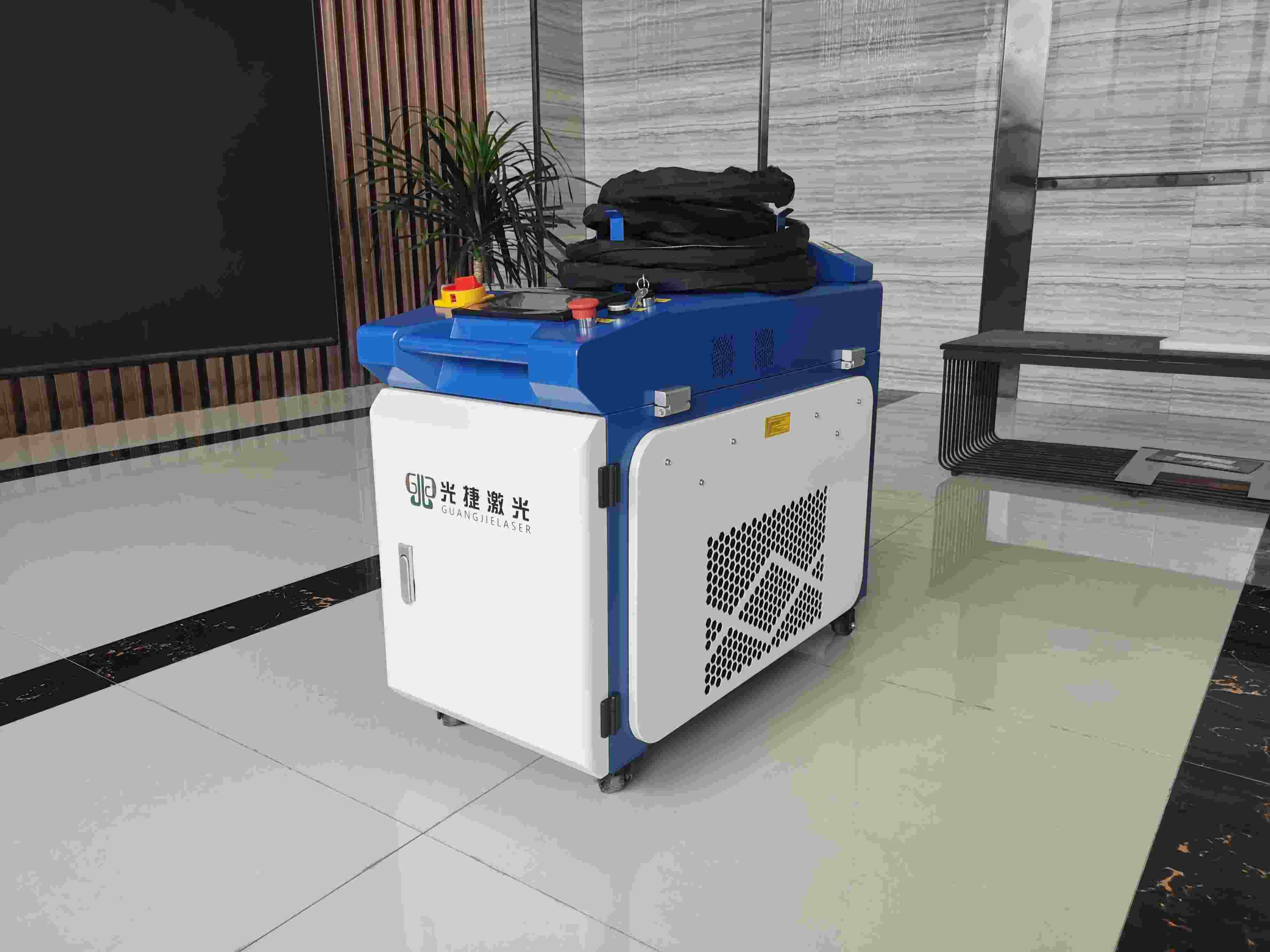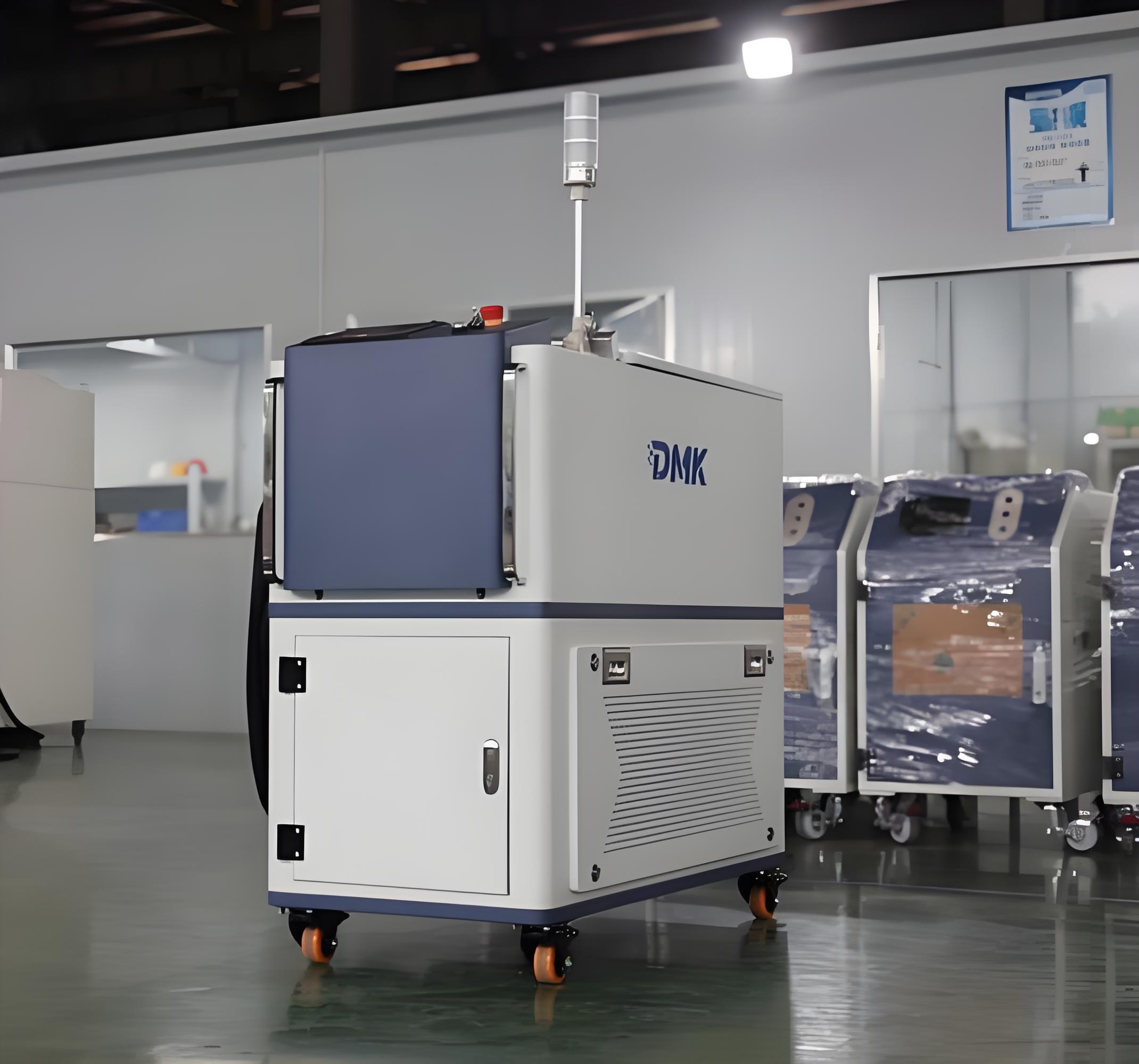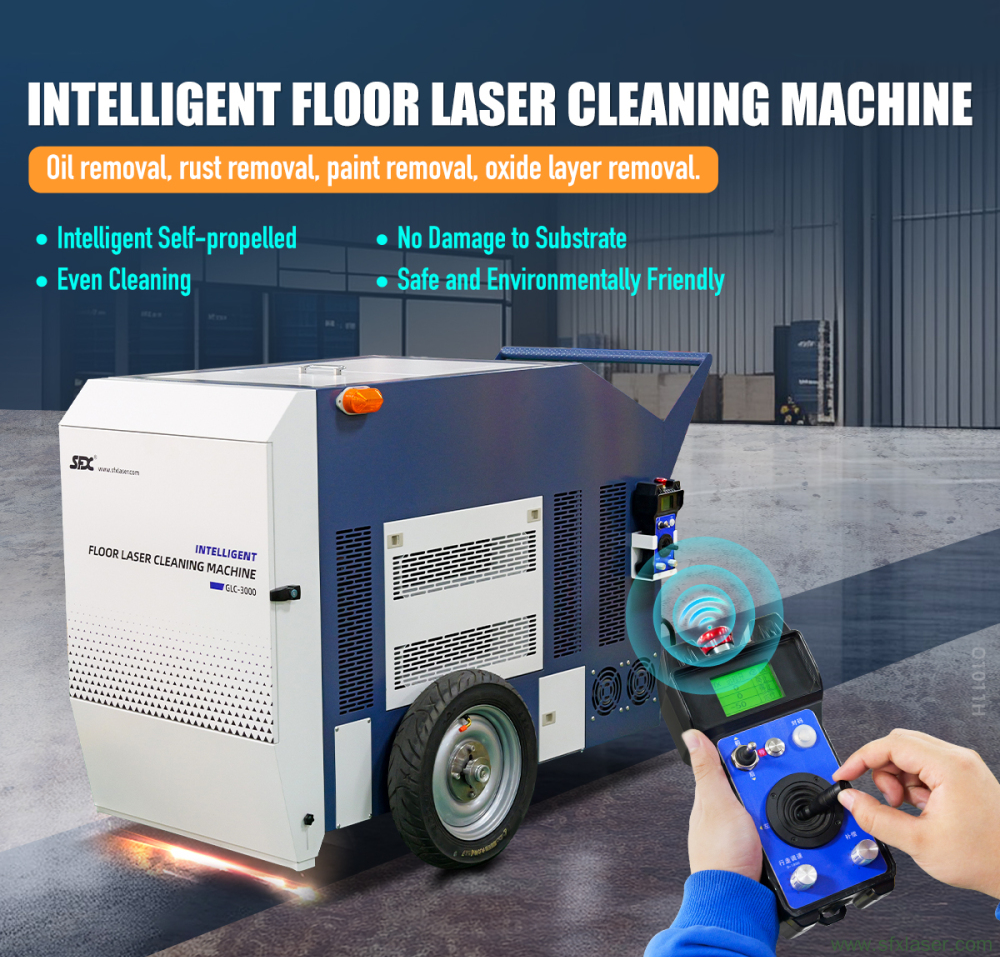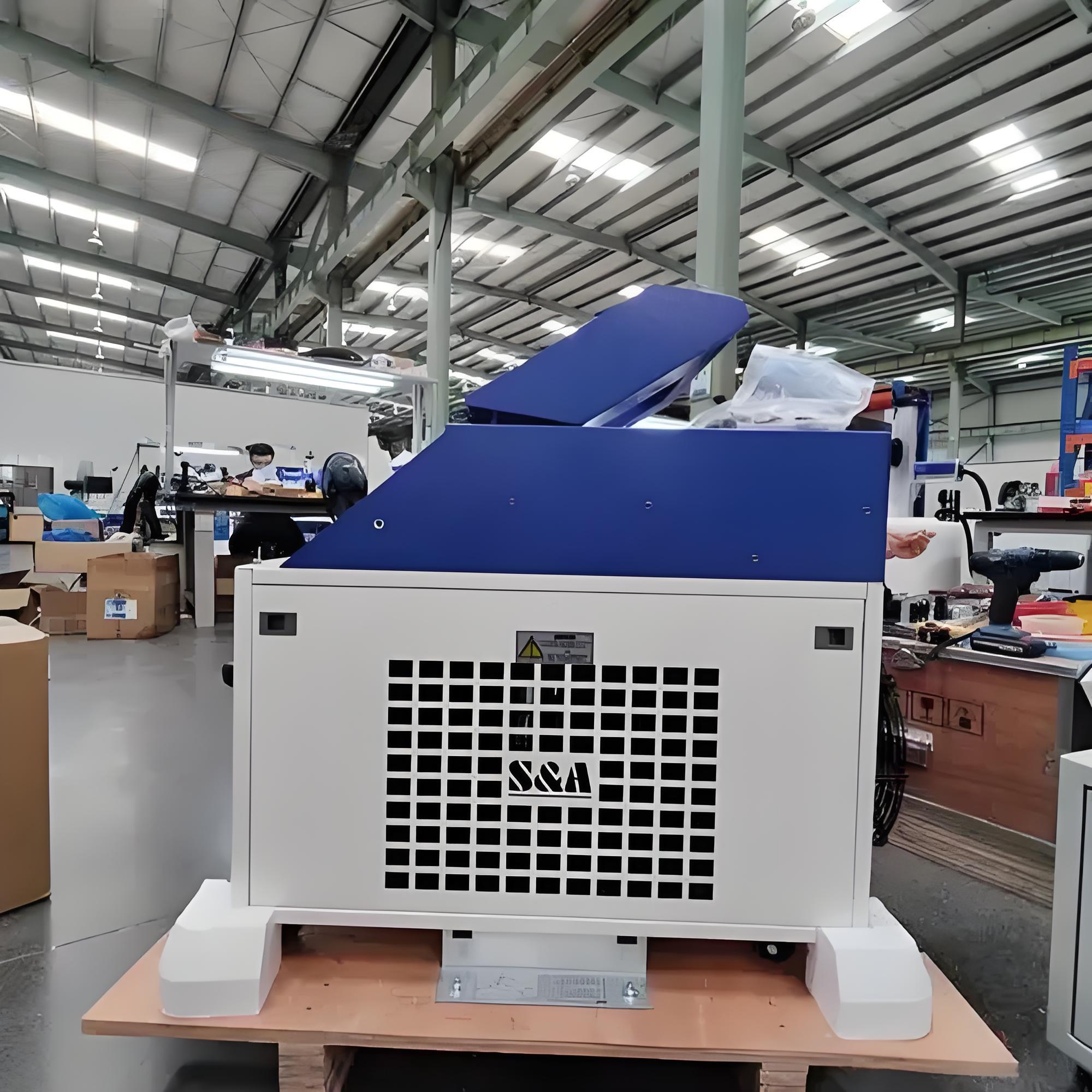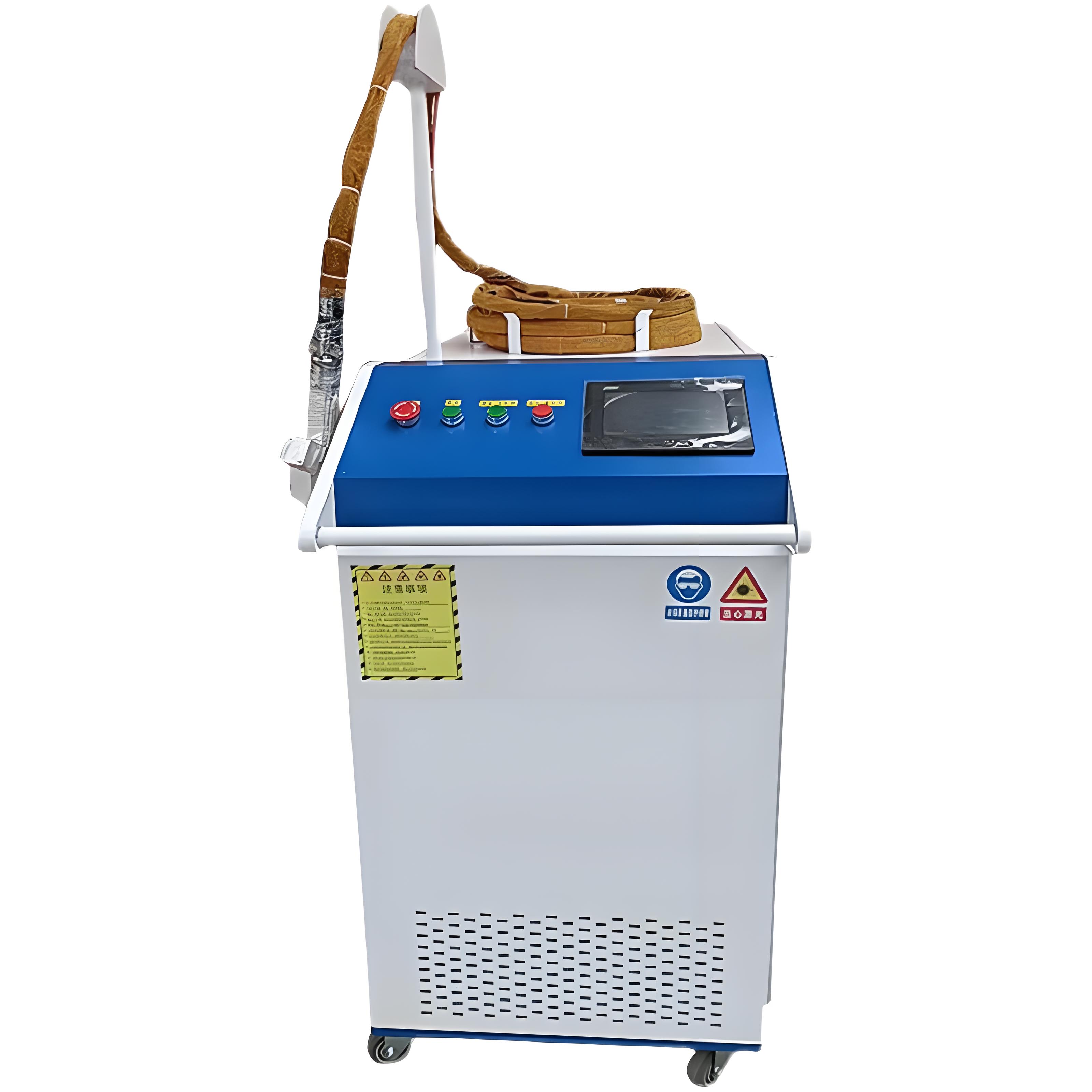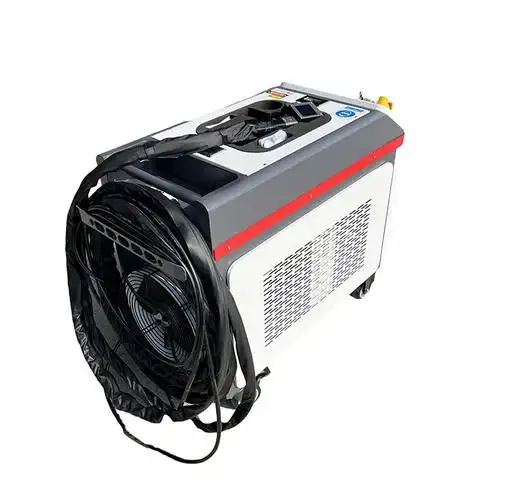Yes, but it is not recommended as the effect is not satisfactory.
Currently, there are two main types of laser rust removers: fiber pulse lasers and fiber continuous lasers. Both emit laser beams with a wavelength of 1064nm, which primarily acts on metallic materials. Oil stains have a relatively low absorption rate for this wavelength, making it easy to damage the underlying metal when attempting to remove them. Under strict control, thin layers of oil stains can be removed, but the results are far from ideal for thicker layers.
The optimal choice for laser cleaning of oil stains is a carbon dioxide laser cleaning machine. The carbon dioxide laser, with a wavelength of 10600nm, primarily reacts with non-metallic materials, effectively “burning off” oil stains without damaging the underlying metal.
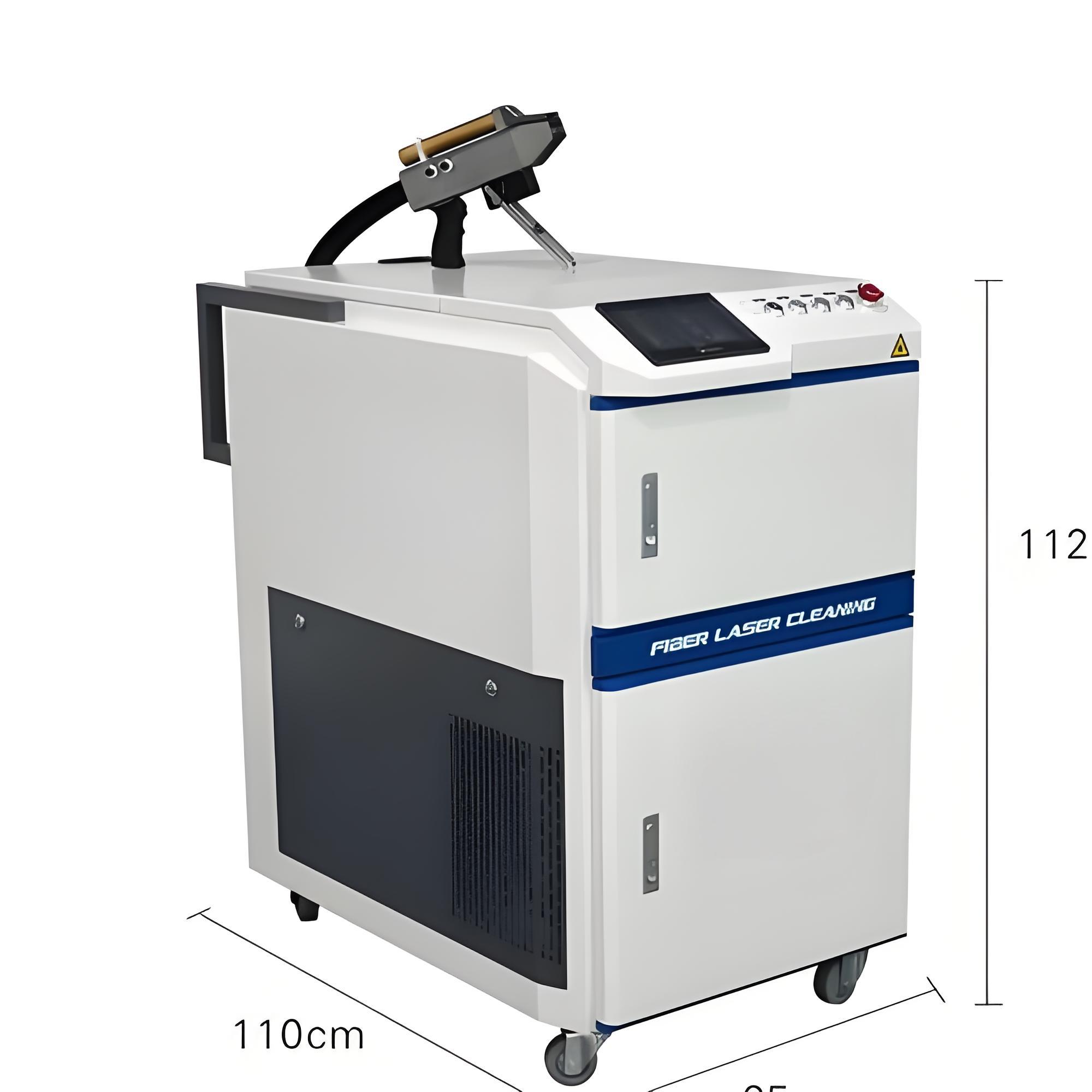
Why do some people use fiber lasers to clean oil stains? This is because fiber lasers are the most cost-effective option. Compared to carbon dioxide lasers, fiber lasers can transmit laser energy through fiber optic cables, offering a wider range of applications. Carbon dioxide lasers, on the other hand, can only transmit energy through light guide arms, making them more expensive and less convenient to use at present.
The principles of laser cleaning can be broadly categorized into three types: 1. The contaminant absorbs laser energy, 2. The underlying metal absorbs laser energy, and 3. Both the contaminant and the underlying material absorb laser energy simultaneously. The first scenario, where only the contaminant absorbs laser energy, is the optimal choice for cleaning, as it allows for the perfect removal of contaminants without damaging the underlying material. When using a laser rust remover to remove oil stains from metal surfaces, the principle at play is the third scenario. Although oil stains have a low absorption rate for fiber lasers, they still absorb some energy and heat up. Meanwhile, the underlying metal absorbs laser energy and generates thermal stress, which continuously vibrates and strips away the contaminants through vaporization. During operation, it is crucial to strictly control the laser energy density to prevent damage to the underlying metal if the laser energy is too high.
In summary, thin layers of oil stains can be removed using a laser rust remover, but the efficiency is low for thicker layers, making high-pressure water jets a more suitable alternative. If laser cleaning is to be used, a carbon dioxide laser cleaning machine is the optimal choice.

